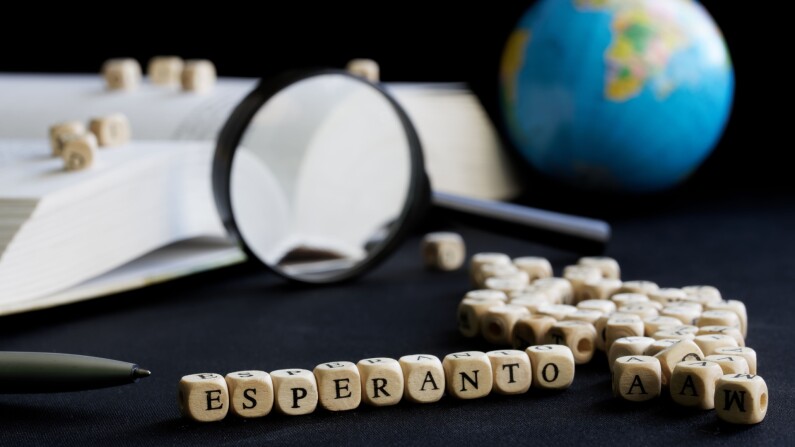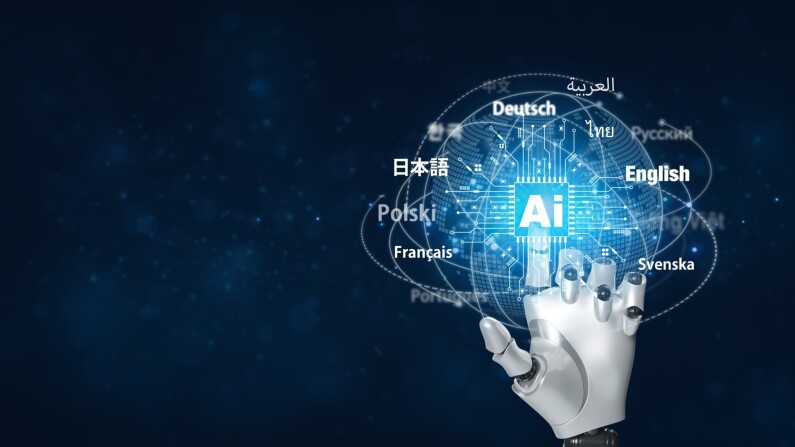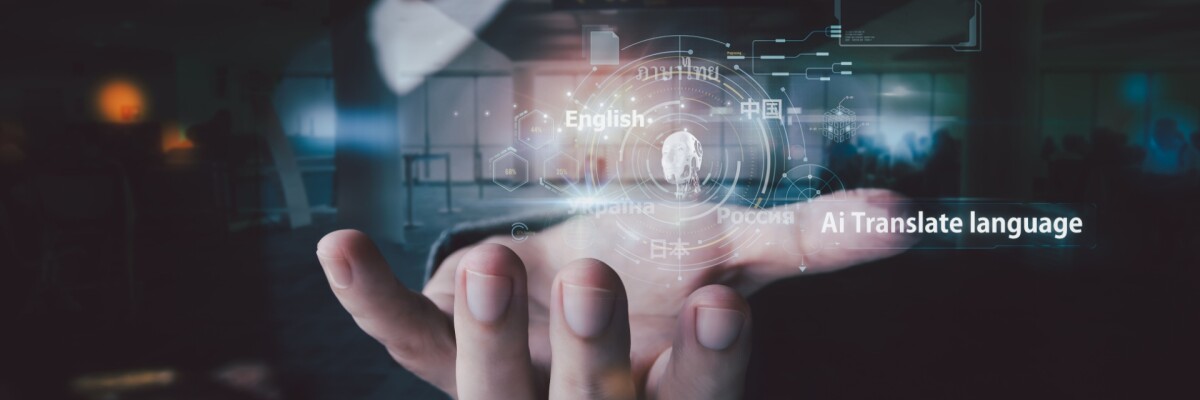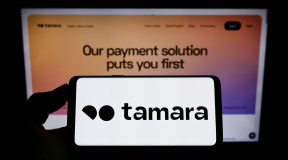For as long as mankind has existed, there has been the problem of translating languages.
Ancient people even came up with the legend of the Tower of Babel, when Noah's descendants tried to reach Heaven, but God destroyed it and “mixed the languages” so that the builders could no longer understand each other and build the tower again. No matter how many eras have passed, still to this day one of the deepest and most sought-after human desires is to know absolutely all the languages of the world, so that the language barrier will never be an obstacle for them again. Only there are more than 7000 languages in the world, according to the largest language catalogue Ethnologue... Will you try to master all of them? No?
Actually, you don't need to do that any more — machine translation has been around for a long time! And more recently, AI translation as well, which is a thousand times cooler than any specialist with any degree. In this article, we will tell you how mankind came to finally realise its long-standing dream and how neural networks work in terms of translation, which are already available to you today (and even for free, by the way).
A unified language or a linguistic technology? The beginning of the story

When the brilliant minds of the past pondered how to bring the world to universal understanding and eliminate the language barrier, they had two options: to invent a common language or to invent technology that would allow anyone on the planet to understand any language. Of course, in the seventeenth century, when the great geographical discoveries and the need to establish contact between different peoples began to make strides in this direction, suitable technologies were out of the question. There were no materials, knowledge, or experience to create them. In short, it was too early. Therefore, scientists followed a simpler path — the first one — and so began the development of a single world language.
Among those involved in the development, the mathematicians René Descartes and Gottfried Leibniz were particularly notable, as they proposed a combined method for creating an artificial and rational (as opposed to existing) language using numbers. Simply put, they suggested replacing all letters with numbers, but, as you can guess, this idea did not spread, because not all the population in the 17th century knew maths (and numbers in general).
A real success was achieved by the Warsaw linguist and ophthalmologist Łazarz Markowicz Zamenhof when, as a result of ten years of work, he created an artificial language called Esperanto in 1887. To this day, there are books published in Esperanto and some radio stations broadcasting in China, Australia, and Poland. In Hungary, you can even learn Esperanto in schools. The language is based on Latin and languages of the Romance group, i.e. French, Italian, etc. However, unfortunately, it has not become as widespread as English. Perhaps because in order to use Esperanto, one still needs to learn it, which means that it does not completely solve the problem of the language barrier, but only provides a tool to lower it.
So, as you have already realised, the world's geniuses did come to the conclusion that the first method was ineffective, and years later, when the environment already allowed it, they took up the second one. The first known machine translator, capable of translating individual words and even phrases from one language to another, was invented by Frenchman Georges Artsruni and patented in the 1930s. His translator was simultaneously a cipher machine, as there was a booming demand for it after the First World War and in the run-up to the Second. The distinctive feature and disadvantage of Artsruni's translator was that a person capable of making the translation readable was required, as it looked like a set of symbols that had to be deciphered manually.
The next achievement in the field of machine translation was Peter Troyanskii's system, but its working principle was highly complex and energy-consuming: each word from the text had to be photographed, and morphological information about this lexical unit (i.e. declension, gender, case, tense, etc.) had to be entered on a typewriter. By the way, according to some reports, it was Troyanskii's pattern that was used to create a switchable computer keyboard.
In the 1940s, American scientist Warren Weaver also contributed to the development of machine translation. He created the Interlingva intermediary language, which was a simplified version of English, and translated the original English text into it, and from the simplified language into the required language. But all of this, of course, was a long way from the translation tools we have today.
A real breakthrough in the history of automatic translation was the Georgetown experiment in 1954, when a team of scientists from the university of the same name, in co-operation with IBM (to this day the leaders in software delivery worldwide), used their computer to perform a translation. In a demonstration, the computer translated selected phrases from Russian into English, which revealed the limitations of machine translation, such as the inability to take into account context, lexical particularities, etc. Such a machine still worked within a strictly defined framework in a dictionary-like manner — not a single step away from what was available in its database and had previously been manually entered by a specialist. However, the IBM computer managed to translate 60 sentences in total using 250 given terms and 6 grammatical rules, which, you may agree, is not bad for the middle of the 20th century.
What was next? The revolution of deep learning and neural networks

All the methods that have been used by machines before are statistical and are ineffective where numerous cultural, stylistic and improvisational elements prevail. It was only with the advent of the Internet in the 1990s that this problem was solved. First came automated translation of web pages, and in the 2000s the so-called deep learning method was discovered, which ultimately changed everything.
“What exactly did it change?” you’ll ask. We’ll repeat, “Everything.” Whereas previously the machine would only translate using a pre-formed database, in the case of deep learning, the machine learnt to translate on its own. The principle (it is also the basis of modern AI) is as follows: a neural network processes, analyses and systematises huge arrays of data, i.e. finished translations, and remembers them. The more such arrays the neural network processes, the smarter it becomes and, consequently, the more accurate and higher quality its own translation will be. It's just like with humans: the more examples you work through, the better your result will be, right? The deep learning model allowed the neural network to set its own rules and overcome barriers such as lack of information, unfamiliarity with the style, etc.
Hence, based on deep learning, the Russian PROMT system specialising in the translation of professional vocabulary was released. This system was successfully implemented in the space industry and delivered to NASA international space stations, thus improving the quality of communication between astronauts. Subsequently, PROMT was used to develop a computer translator for schoolchildren called Magic Gooddy, which speaks Russian and English and can translate almost instantly from one language to another.
In 2016, we saw neural networks of the kind we are already familiar with enter the translation arena. Unlike previous systems, they did not consider each lexical unit separately, but the whole phrase or even a paragraph at once, which made translation more seamless and contextual. Because of this, after time (and a few more milestones in the development of deep learning, which continued to be refined) they were finally able to teach the machine to translate wordplay and lexemes. The technical process looks like this: when translating, the text is broken down into word segments, then the system uses decoders to measure the ‘weight’ of each segment in the text, then extracts the most probable meanings, thus accentuating and translating the segments. After that, the machine literally “puts” them together like a jigsaw puzzle — and ta da!
In 2016, the very first to offer humanity a free translator based on a neural network running on a deep learning model was, of course, Google's translator — Google Neural Machine Translation. It is built on a recurrent neural network, rather than a regular one. This means that the system calculates the meaning of a word or phrase based on the previous ones, looking at the whole sequence of phrases. Thanks to this, the system will translate the phrase “лук из дуба” (an oak bow), for example, not using the word “onion”, but “bow” (because it is about a bow that is used to shoot, and in Russian these two words—onion and bow—are spelled the same. Google's neural network is bidirectional, i.e. its work is divided into two streams: the first stream breaks the sentence into semantic elements and analyses them, while the second stream suggests and synthesises the most probable translation. Interestingly, this system reads the translation not only from left to right, as in normal human reading, but also from right to left! This allows for a deeper understanding of the phrase.
Also, in addition to machine learning and deep learning, a Natural Language Processing (NLP) model can be used in translation. It reproduces the way a human translates foreign speech, i.e. it takes into account emotional tone, catchphrases, cross-expressions, word relationships, etc. This makes NLP work best where it is important to process idioms or cultural references. However, it is not as accurate as deep learning, which is why modern neural network translators combine two models at once — NLP and deep learning, and sometimes also machine learning.
Naturally, the contribution of artificial intelligence to the field of translation cannot be stressed enough. The integration of other modern technologies even allows such translators to perceive speech by ear in real time and offer audio or text interpretations instantly. Even the classic Google Translate can cope with this today, which now also uses a neural network, thanks to which its translations have become even more accurate and of higher quality — try it for yourself!
Share this with your friends!






Be the first to comment
Please log in to comment